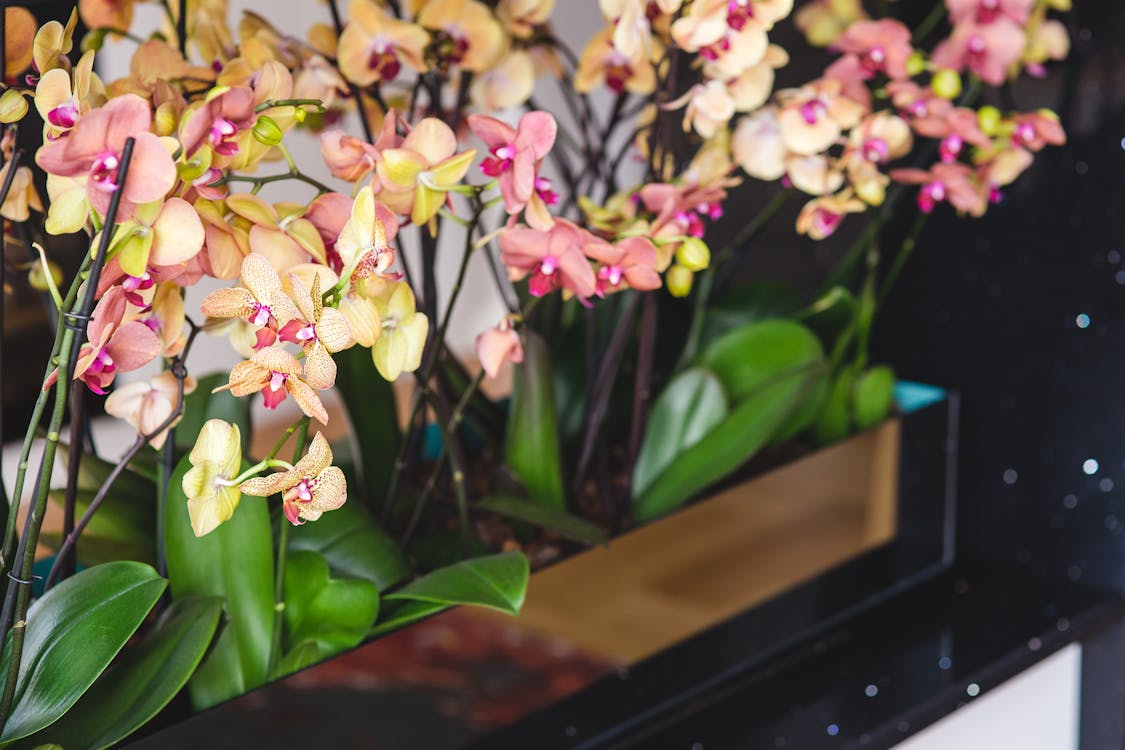There is nothing more addictive than having indoor plants surrounding your space. Apart from being aesthetically pleasing and a great asset to your home, indoor plants improve the air quality in your house!
In 1989, Nasa had a little experiment and they demonstrated that specific indoor plants purify the air and remove any harmful organic elements such as thriclorothysene, benzene, and ammonia.
Today, you’ll get to know some of the best indoor plants to put in your home. Exciting isn’t it?

1.Orchid
Whenever you see an orchid flower, you admire its unique shape and the elegance of it. If you are painting your house, having an orchid plant in the room helps to clear the air of xylene, a solvent often found in paint.
An interesting fact to take along with you is that Chinese traditions say, if you speak to the orchid with love and care, in return orchids bring good luck and stability to our family members.
Care: Orchids are one of the most difficult plants to grow or take care of but it’s not really that complicated. Orchids dislike extreme temperatures (too high or too low). All it needs is indirect light and to place it in a bowl of water once a week (letting it drain afterward). Orchids’ life-time is about 100 years but they also stay dormant for around 6 months.

2. Bromeliad
This plant is perfect for tropical weather and it’s easy to adapt indoors as it is accustomed to growing in inhospitable places, like rocks. Apart from they’re gorgeous flowers and giving your home a touch of exotic flavor, it has impressive benefits.
The State University Of New York at Oswego conducted research based on this exotic plant. They found out that Bromeliad sucks in up to 80% of toxic compounds present in the air. Wow! Isn’t the crazy of what a plant can do!
Care: Bromeliad is an easy one, doesn’t complain too much, hehe…it only has some little rules to follow. Place it in a bright location(not direct sunlight) and water it once a week, pouring the water into the calyx(the cup at the base of leaves). If you stick to this simple care routine, you’ll be able to be friends with it for up to 6months.
3. Anthurium
If you have an office desk at home or work and it’s looking boring, anthurium will do the job. It also regulates humidity that fills the air with filtered water vapor and also processes harmful substances such as xylene and toluene.
Anthurium flowers signify long-lasting love and friendship, if you take care of the plant properly it can re-bloom in their season for years!
Care: Choose the warmest part of your house but without direct sunlight. Every now and then, water the plant when you see that soil is dry. Do not excessively water it as it could lose its leaves!
4. Sansevieria
Guess What!? You can sleep with plants in your bedroom, it’s totally fine. Sansevieria, also known as the ‘’snake plant’’ is the most widely suggested plant to put in your bedroom because it releases oxygen throughout the night and refreshes the space. Plus, it looks great with any type of decor.
Care: If you never took care of an indoor plant: than sansevieria will be your best friend. It has no preference when it comes to temperature or light and you can water it only once a month! No wonder is called the ‘’immortal plant’’.
5. Pothos
Pothos is one of my favorite plants, it grows beautifully and this plant is a growing plant, it can create ‘’trailing vines’’ that grow over 10 feet long (wow!). Pothos filters benzene, formaldehyde, xylene, and toluene. If you are not a green thumb, then pothos is a plant for you.
Care: Thrives in medium to low indirect light. Not suited for intense, direct sun. You water it once every 1-2 weeks depending on the light levels.
6. Dracaena
The easy-going, low-maintenance plant, the Dracaena Marginata plant is your best bet. It removes benzene, formaldehyde, trichloroethylene, and xylene. It will look gorgeous if placed in one of your corners in your home!
Care: Not that complicated, don’t worry. This baby prefers bright, indirect light and it adapts to any temperature. Keep evenly moist, not wet or dry.
